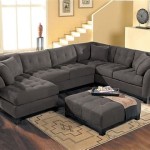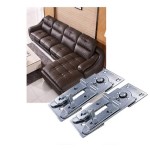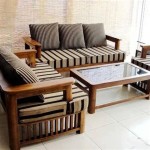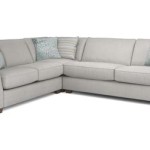The Enduring Appeal of Old Style Leather Sofas
Leather sofas have long been associated with luxury, comfort, and durability. While contemporary designs dominate much of the furniture market, old style leather sofas continue to hold their own, appealing to those who appreciate timeless aesthetics and a certain level of historical character. These sofas often evoke images of stately homes, classic literature, and periods where craftsmanship was paramount. Understanding the appeal of old style leather sofas requires exploring their distinctive features, historical significance, and the various sub-styles that contribute to their enduring popularity.
The term "old style leather sofa" encompasses a range of designs, generally characterized by features prevalent in furniture making from the late 19th century through the mid-20th century. Distinguishing them from modern, streamlined sofas, these pieces often display features such as rolled arms, button tufting, nailhead trim, and generously proportioned frames. The leather itself tends to be thicker and more richly dyed than that typically found in contemporary mass-produced furniture. These elements combine to create a piece that exudes a sense of permanence and quality, conveying a narrative of tradition and refined taste.
Defining Characteristics of Old Style Leather Sofas
Several key design elements distinguish old style leather sofas from their modern counterparts. Examining these features provides a clearer understanding of what constitutes this specific aesthetic and highlights what draws consumers to these timeless pieces.
Firstly, the construction of the frame is often more robust. Old style sofas tend to utilize hardwood frames, built to withstand decades of use. These frames are typically heavier and more substantial than those found in modern sofas, contributing to their longevity and overall stability. The joinery techniques employed, such as dovetail joints and mortise-and-tenon joints, further reinforce the structural integrity of the sofa.
Secondly, the leather upholstery is a defining feature. Full-grain leather, known for its durability and natural beauty, is commonly employed in old style sofas. This type of leather retains the natural markings and imperfections of the hide, adding to the character and authenticity of the piece. Vegetable tanning, a traditional process using natural tannins from plants, is often preferred for its environmental friendliness and the rich, deep colors it produces. The leather is meticulously applied, often hand-stitched, and treated with waxes and oils to enhance its suppleness and protect it from wear.
Thirdly, the details are crucial. Button tufting, a hallmark of many old style leather sofas, involves securing the leather to the frame at regular intervals with buttons, creating a plush, diamond-patterned surface. Nailhead trim, another common feature, involves rows of decorative nails hammered along the edges of the sofa, adding a touch of sophistication and visual interest. Rolled arms, which curve outwards from the sides of the sofa, provide a comfortable place to rest one's arms and contribute to the sofa's overall elegance. These details, often executed by skilled artisans, elevate the sofa from a functional piece of furniture to a statement of style.
Finally, the overall proportions tend to be more generous than those of modern sofas. Old style sofas are often deeper and wider, providing ample seating space and a sense of luxurious comfort. The cushions are typically filled with down or feathers, or a combination of both, offering a plush and supportive seating experience. The height of the backrest is also often taller, providing more support for the back and neck.
Historical Influences on Old Style Leather Sofa Design
The designs of old style leather sofas are deeply rooted in historical furniture styles, reflecting the evolving tastes and preferences of different eras. Understanding these influences provides context for the specific design elements and helps appreciate the craftsmanship involved in creating these pieces.
The Chesterfield sofa, originating in England in the 18th century, is a prime example of an influential old style leather sofa. Characterized by its deep button tufting, rolled arms, and low back, the Chesterfield style has remained popular for centuries. Its origins are often attributed to Lord Philip Stanhope, 4th Earl of Chesterfield, who commissioned a sofa that would allow a gentleman to sit upright comfortably without wrinkling his clothes. The Chesterfield sofa became a symbol of British elegance and has been adapted and reinterpreted in various forms over time.
Victorian-era sofas, prevalent during the reign of Queen Victoria in the 19th century, often featured ornate carvings, plush upholstery, and richly colored leather. These sofas reflected the Victorian penchant for opulence and grandeur, with elaborate detailing and intricate designs. Deep button tufting, fringed edges, and decorative cushions were common features, adding to the sofa's luxurious appearance.
The Art Deco movement of the 1920s and 1930s also influenced leather sofa design, with its emphasis on geometric shapes, streamlined forms, and luxurious materials. Art Deco leather sofas often featured clean lines, smooth surfaces, and bold colors, reflecting the era's fascination with modernity and innovation. Chrome accents and exotic woods were sometimes incorporated, adding to the sofa's sophisticated appeal.
Mid-century modern design, popular in the mid-20th century, introduced a more minimalist aesthetic to leather sofa design. These sofas often featured simple lines, tapered legs, and a focus on functionality and comfort. While less ornate than earlier styles, mid-century modern leather sofas still retained a sense of elegance and sophistication, often showcasing the natural beauty of the leather.
These historical influences demonstrate the diverse range of styles that fall under the umbrella term "old style leather sofa." Each era contributed its unique design elements, resulting in a rich tapestry of styles that continue to inspire furniture designers and homeowners today.
Sub-Styles and Variations within Old Style Leather Sofas
The category of old style leather sofas encompasses a variety of sub-styles, each with its distinct characteristics and appeal. Recognizing these variations allows for a more nuanced understanding of the different options available and helps in selecting a sofa that aligns with one's personal taste and interior design preferences.
The English Roll Arm sofa, as often mentioned, is characterized by its gently curving arms that roll outwards and downwards. This style is known for its comfort and versatility, fitting seamlessly into a variety of interior design schemes. English Roll Arm sofas often feature a low back, loose cushions, and a relaxed, informal feel.
The Tuxedo sofa, distinguished by its high arms and back that are the same height, offers a more formal and structured aesthetic. This style is often associated with Art Deco design and exudes a sense of sophistication and elegance. Tuxedo sofas typically feature clean lines, tailored upholstery, and a more upright seating position.
The Lawson sofa, designed for comfort and versatility, features a lower back and arms compared to the Tuxedo sofa. It generally is characterized by loose back pillows. This style is known for its comfortable seating position and its ability to adapt to various interior design styles. Lawson sofas often feature rounded arms and a more relaxed silhouette.
The Bridgewater sofa, known for its low arms, slightly rolled back, and skirted base, offers a comfortable and inviting aesthetic. This style is often associated with traditional and cottage-style interiors. Bridgewater sofas typically feature soft, plush cushions and a relaxed, welcoming feel.
The Camelback sofa, distinguished by its arched back that resembles a camel's hump, offers a more formal and elegant aesthetic. This style is often associated with traditional and neoclassical interiors. Camelback sofas typically feature carved legs, button tufting, and a more structured silhouette.
These various sub-styles demonstrate the breadth and diversity within the category of old style leather sofas. Each style offers a unique aesthetic and seating experience, catering to different tastes and preferences. When selecting an old style leather sofa, it is essential to consider these variations and choose a style that complements the overall design of the room.
The selection of full-grain leather plays a significant role in the overall appearance and longevity of the sofa. Different types of leather, such as aniline, semi-aniline, and top-grain leather, offer varying degrees of durability, stain resistance, and natural beauty. Aniline leather, known for its natural appearance and soft texture, is the most expensive and delicate type of leather. Semi-aniline leather offers a balance between natural appearance and durability. Top-grain leather, the most common type of leather used in furniture upholstery, is more durable and stain-resistant than aniline leather.
The finishing treatment applied to the leather also affects its appearance and performance. Waxed leather, oiled leather, and distressed leather are all popular choices for old style leather sofas. Waxed leather is treated with a layer of wax, enhancing its natural beauty and providing a degree of protection against scratches and stains. Oiled leather is treated with oils, making it supple and resistant to cracking. Distressed leather is intentionally aged to create a vintage look.
The color of the leather is another important consideration. Classic colors such as brown, black, and burgundy are timeless choices that complement a wide range of interior design styles. However, old style leather sofas are also available in a variety of other colors, including green, blue, and red. The color of the leather should be chosen to complement the other colors in the room and create a cohesive and visually appealing aesthetic.
Ultimately, the enduring appeal of old style leather sofas lies in their timeless design, high-quality craftsmanship, and the sense of history and tradition they evoke. These sofas are not merely pieces of furniture; they are statements of style and expressions of personal taste. By understanding the defining characteristics, historical influences, and sub-styles of old style leather sofas, consumers can make informed decisions and select pieces that will provide years of comfort, enjoyment, and aesthetic pleasure.

Braunes Vintage Ledersofa 1980er Bei Pamono Kaufen

Chesterfield Ledersofa Vintage Chester Sofa Gallese

Englische Vintage Ledersofas Clubsofas Chesterfield Sofas Kaufen

Braunes Vintage Ledersofa 1980er Bei Pamono Kaufen

Braunes Vintage Ledersofa 1980er Bei Pamono Kaufen

Ledersofa Vintage Retro Sofa Canape Scandi Jbf Mc151

Ledersofa Braun Samtige Haut Aussehen 3 Sitze Fahrstil

Vintage Clubsofa Ledersofa Kopenhagen 2 Sitzer Rindsleder Braun

Braunes Vintage Ledersofa 1980er Bei Pamono Kaufen

Chesterfield Sofa Aus Braunem Leder Vintage Drei Gepolstert








